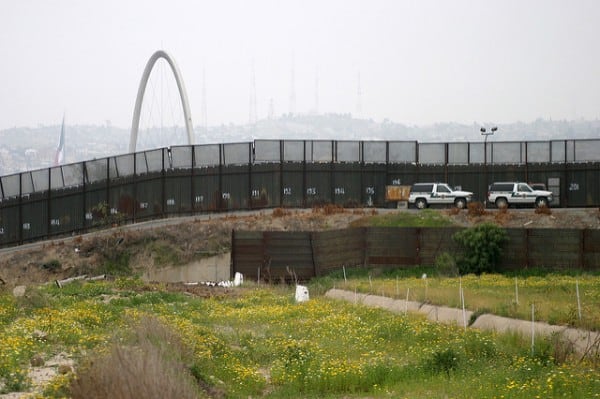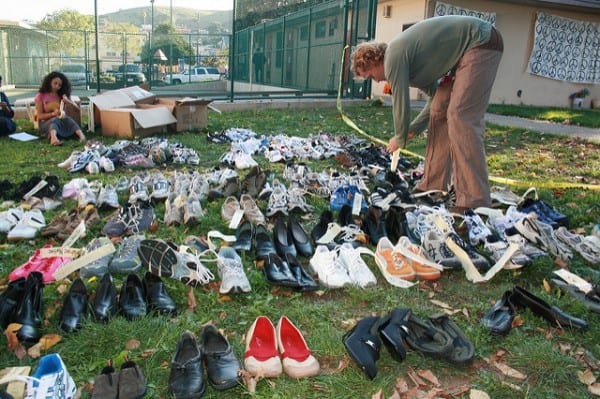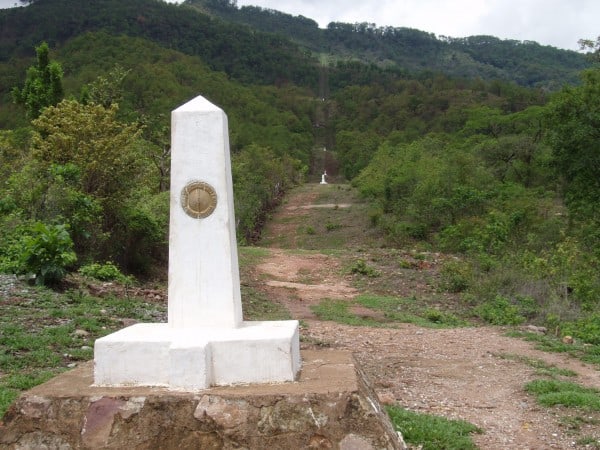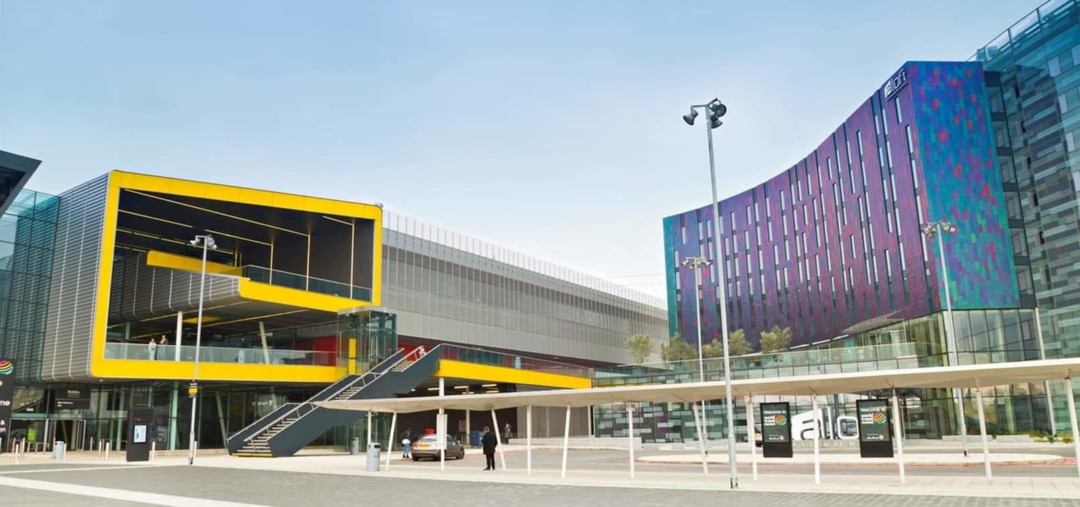In the spring of 2007, when I was driving with Ramón (all names have been changed), a Mexican man who lives along an unmonitored road that crosses the Mexico-Guatemala border, we passed one of the newer, two-story homes. I commented that the house had its outdoor lights on all day. Ramón shrugged. “He won’t care. He’s rich”, he said. “He doesn’t care about the lights”. Ramón told me that the owner – Gerardo – used to be a pollero, or a human smuggler, who brought many people to the United States. But he stopped, according to Ramón, when “things became more complicated” and Mexico intensified immigration surveillance in the mid-2000s.
Other border residents also whispered that Gerardo used to be a pollero or coyote, another term used to refer to migrant smugglers. The whispers were usually followed by an assertion that he was no longer a smuggler. Now he just raised cattle. Prior to the late 1990s and early 2000s, many border residents provided Central Americans with rides into Mexico with little fanfare.
The recent whispers, silences, and rumours that began to surround migrant smuggling were not the only telling factors of a changing migration climate, but so was Gerardo’s story. In fact, I was never certain if Gerardo was a smuggler, in part because the term and practices of smuggling had shifted over time in response to changing visa procedures and immigration policies and policing in Mexico, Guatemala, and the United States.
Mexico’s intensification of border policing and concerted securitisation of migration can be traced to the US-backed Plan Sur in 2001 to support US security concerns. The escalation of the drug war in Mexico in 2006, and Mexico’s implementation of the Southern Border Plan in 2014 in response to Washington’s outcries of a “surge” on the border in 2014, further intensified migrant policing.

Mexico has concentrated border surveillance on select, modernised border points of entry, as well as on ad hoc highway roadblocks to establish ‘belts of control’. However, migrant desperation, continued demand for cheap labour in the United States, and widespread official corruption and impunity has meant that heightened securitisation has not deterred migration. Instead, migrant smuggling at the Mexico-Guatemala border has shifted from more informal networks and local guides to higher-priced smugglers and criminal groups as human rights abuses against migrants increase.
How Gerardo became a smuggler
The first border residents, whether from the Mexican or Guatemalan side, who went to the United States in the 1990s all went with Gerardo. Miguel, a Guatemalan border resident, joined other young men from the Mexican side of the border. “We all went to the United States with Gerardo before he was a coyote”, Miguel said. They went to work on pine tree plantations in Alabama. Since Gerardo was the first to work at the plantation, he found work for others. At first each man used his own money to travel to the northern border, where they hired coyotes to help them cross the US-Mexico border.
Gerardo did not charge any of them and also worked on the plantation. Subsequently, Gerardo recruited his friends more formally under work visas through his employer in Alabama. The ironic twist was that the visas were for Guatemalans, and so the Mexicans purchased false Guatemalan papers in La Libertad or Guatemala City. Border residents believed that work visas were easier to acquire in Guatemala than in Mexico, after the end of Guatemala’s 36-year civil war in 1996. Due to fewer applicants, visas were also less competitive in Guatemala. When the visa process expired, people were still able to go north without documents, as the cross-border migration and work networks were by this point established. Later, Gerardo brought the same people from the same places to the same location. This time he charged, making him a coyote.

Yet the stories surrounding Gerardo’s role shift depending on the point in time and the interlocutor. “No, he wasn’t a coyote…they are from bigger cities”, one Mexican border resident said. “Some people say he is, but he was a contratista [contractor], since his boss in the US would send him here to bring others … they went with visas, which they bought in Guatemala”. Others mentioned Gerardo’s role as a labor contractor and coyote as one and the same; the only thing that changed was how he could bring people to the employer in the US. In other words, Gerardo was converted from a fellow migrant to a labour broker to a smuggler depending on changes in US immigration and visa processes, all the while continuing to provide his Alabama employer with Mexican and Guatemalan workers.
Some residents wonder how Gerardo made so much money, but others see him as someone who helped others regardless of whether they called him a fellow migrant, smuggler, or contractor. “He is the one who helped many people from here go to the US”, Gerardo’s cousin noted. “He helped the majority from this region. Since he was one of the first to go, he helped others to go with visas and then others as a coyote. But then he stopped … when it got more dangerous”.
When smuggling becomes a profession
As Mexico enhanced immigration surveillance and criminalised smuggling, and drug cartels expanded into human smuggling and preying on migrants, smaller-scale smugglers like Gerardo left the business. It became more dangerous to crossing through Mexico and more expensive to evade corrupt officials, checkpoints, and criminals. Locals preferred to go with local border guides and brokers since they trusted people with whom they shared social and kinship connections.
In recent years, border residents have had to search for smugglers in larger cities, those who may specialise in, or have deeper connections to, smuggling networks. Smugglers are increasingly necessary to helping locals navigate Mexico’s proliferation of immigration checkpoints.
Some smugglers are trustworthy, but locals suspect that unknown smugglers may abandon them or have connections with more criminal actors as they hear stories about such incidences. Locals’ efforts to distance themselves from migrant smuggling generate fear that perpetuates the image of the criminal, sophisticated human smuggler despite the diversity of arrangements that may still characterise smuggling.
Eduardo, a Mexican border resident, referred to how migrant smuggling transformed from a networking service to a more lucrative and risky business that locals increasingly associate with drug trafficking regardless of actual overlaps. He mentioned that Gerardo probably never made much money bringing people. Eduardo also used to “deliver” migrants to smugglers locally and occasionally to the northern border as a teenager. But, he told me, “[in those days] it was very little and it was different…easy…I barely made anything”.
Eduardo confided suspicions about Gerardo and his earnings that led locals to collapse migrant and drug smuggling together. Gerardo had a small horse track on his property in a region where horse races are often associated with drug exchanges. “That is where they do exchanges … it is all narcos”, said Eduardo. Eduardo suspected Gerardo was collaborating with people working in “drugs and pollos”. But, he said, “do not tell people where you heard that”.
The discursive shift in seeing Gerardo as someone who helped his community members obtain work to someone suspected of working in the drug trade illustrates not only how the securitisation of migration and the militarisation of the drug war pushed these two fields closer together, but also how they became morally equivalent to border residents.
Prior to Mexico’s intensification of migrant surveillance, smuggling migrants may have still been illegal, but it was a mundane, relatively benign aspect of border life.

Previously an activity that most residents engaged in to some degree, they have been pushed out of migrant smuggling by its increasing risk, price, and criminalisation under Mexico’s intensification of border policing since signing Plan Sur in 2001, and most recently, under the 2014 Southern Border Plan. In turn, the increasing criminality and corruption surrounding migration make border residents not only avoid it, but also fearful to even talk about it. Once a fact of border life, they no longer spoke about migrant smuggling, or talked about it as something they did in the past, or spoke about it quietly.
Just like the drug traffickers they knew passed through their community, they knew migrant smugglers used this route, but did not see or hear anything. As one border resident told me, “if drugs come through here, we don’t realise. They don’t bother us”.
Drugs and migrants, even though they are often carried by different actors and for different purposes, have increasingly collapsed together in the border imagination, just as heightened security policies have led criminal and drug-related groups to branch into and take over human smuggling routes in a larger contest over territory and control. They both belong to the same “public secret” that everyone knows, but about which one does not speak directly, or only through whispers, rumour, and hearsay.
At this particular juncture, border talk around human and drug smuggling alternates between silence and rumour as the landscape shifts. Rumour can help people living in a constant state of fear navigate uncertainty while it also serves to govern the movements of the vulnerable. At the Mexico-Guatemala border, alternating silences and rumours protect local residents while they also enhance the illicit aura around drugs and migration and perpetuate silence and impunity.

As Gerardo’s narrative demonstrates, the profile of the human smuggler is shaped by fluctuations in migration policy and policing. Nicholas de Genova critically examines immigrant illegality by pointing to how changing laws, rather than migrant and smuggler actions, produced “the legal production of migrant illegality”. By extension, to understand the evolution and fear of the criminal smuggler, we must become attune to the criminalisation of human mobility. The criminalisation and uneven policing of boundaries has shaped and structured the strategies of those seeking to evade them, as well as created and altered the constellations of actors who serve as brokers at the disjunctures between borders, their incomplete enforcement, and human mobility.
Our co-producer openDemocracy offers more food for thought on human smuggling:
- Beyond common-sense notions of human smuggling in the Americas, by SOLEDAD ÁLVAREZ-VELASCO and MARTHA RUIZ
- Smuggling as social negotiation: pathways of Central American migrants in Mexico, by YAATSIL GUEVARA GONZÁLEZ
- The call to become a smuggler, by LUIGI ACHILLI
- Precarious livelihoods in eastern Indonesia: of fishermen and people smugglers, by
- Governing migrant smuggling: a criminality approach is not sufficient, by ANNA TRIANDAFYLLIDOU
- The struggle of mobility: organising high-risk migration from the Horn of Africa, by TEKALIGN AYALEW MENGISTE
- Communities of smugglers and the smuggled, by NASSIM MAJIDI





